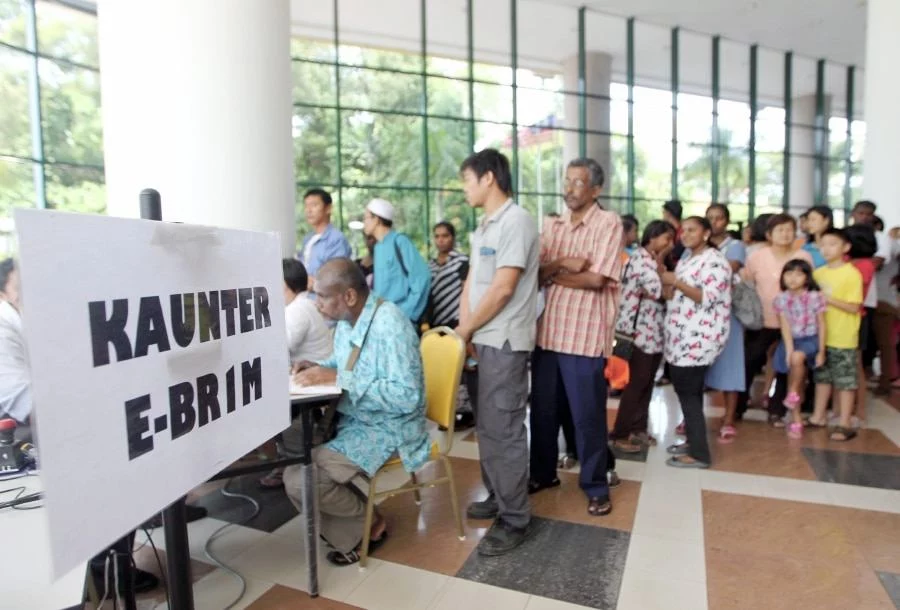WHILE the Pakatan Harapan government has promised to continue the 1Malaysia People’s Aid (BR1M) unconditional cash transfer programme for at least another year, its future seems highly uncertain.
Recent media statements from Prime Minister Tun Dr Mahathir Mohamad as well as Economic Affairs Minister Datuk Seri Azmin Ali indicate that the government intends to gradually reduce BR1M payments before scrapping the programme entirely.
This would be a misstep. Instead of an outright removal of BR1M, efforts should be directed at reforming and improving the programme.
Similar cash transfer programmes have existed globally since the 1990s—and decades of research have overwhelmingly shown that cash transfer programmes are successful in reducing poverty and uplifting the quality of life of recipients. Available evidence also chips away at popular notions long used by critics of cash transfer programmes. One common allegation is that they make the poor “lazy and dependent”.
But multiple studies have actually shown cash recipients actually increased their hours worked, with lower work participation only recorded in the elderly or those caring for dependents. Another trope is that the poor are more short-sighted and irresponsible than “ordinary” people — and so giving them cash will only encourage wasteful spending on vice goods like cigarettes and alcohol. Again, the research does not support this: recipients generally spend most of their benefits on household necessities, with results demonstrating that spending on vice goods actually fell.
So why not just give the poor food and equipment (i.e. in-kind benefits) instead? Well, because cash programmes are much simpler and cheaper to disburse. To reuse a Brookings Institution estimate, cash programmes spend only US$0.10 (RM0.40) in administration costs for every US$1 of benefits delivered, while in-kind benefit programmes spend a whopping US$2.13 per US$1.
Recipients generally spend most of their benefits on household necessities, with results demonstrating that spending on vice goods actually fell.
Cash programmes are also more transparent than in-kind benefits. Electronic payments are quick and easy to verify, providing less opportunity for corruption and leakages, whereas in kind benefits are much harder to monitor. Consider the 1Azam programme, which was intended to give the poor the means to earn their own income by providing them with equipment like sewing machines or food stalls. A bipartisan Public Accounts Committee (PAC) report revealed that eight out of 10 1Azam beneficiaries received equipment that was either faulty or did not last long. This is despite the programme spending about RM5,000 per recipient, enough to pay someone 4-5 years of BR1M.
In cases where recipients did receive working equipment, some just sold it for cash— highlighting the weaknesses of another suggestion to make BR1M a voucher programme. Quite often, the poor just need the flexibility that cash provides, which can support current household consumption, or encourage savings and future productivity-enhancing expenses — something that non-cash benefits cannot do.
Undoubtedly, BR1M has many problems too. My wish list for BR1M reforms would start with raising the benefit amount whilst reducing the qualifying income threshold, increasing the impacts to those who truly need it.
I estimate that current BR1M payments only cover about four per cent of annual household consumption, while evidence suggests payments closer to 20 per cent would induce more widespread positive impacts for recipients. The current highest qualifying threshold also breaches the bottom middle income (M40), whereas cash programmes usually target much poorer segments of society.
Second, BR1M payments could be pegged to a consumer price index. The BRIM amount could then be adjusted annually based on the rise in inflation rather than through the current ad-hoc announcements in the annual budget. This would reduce political influence on the BR1M amount and diminish its “bribery/handout” reputation.
Going even further, using regional price indices instead could allow regionally varied amounts which can better reflect regional cost-of-living differences.
Third, we need to avoid “cliffs” by allowing BR1M amounts to slowly taper off as recipient income increases instead of cutting beneficiaries off completely once they reach the maximum qualifying income. This would reduce the incentive for recipients to cut work hours as their income rises close to the maximum.
Fourth, in-depth discussions on BR1M’s conditionality are needed. Imposing conditions will mean that additional requirements — such as school attendance requirements for the recipient’s children or minimum annual visits to healthcare practitioners — would be needed to qualify for BR1M.
Results suggest that conditional cash transfers are more effective in improving human capital when programme conditions are tied to health and education outcomes.
More importantly, conditional cash programmes are also more politically attractive — with many voters and taxpayers believing that recipients should “work” for their benefits.
However, it is important to recognise that the costs of imposing conditionality are significant.
Conditional programmes are much more expensive and complex, requiring constant monitoring and enforcement of programme conditions and necessitating close coordination between different ministries.Conditional cash programmes also involveatrade-off between prioritising current poverty reduction and future human capital development. Enforcing conditionality disproportionately imposes huge compliance costs to the poorest households, potentially cutting off the very group that needs the most help.
Lastly, there are other important design choices like leveraging BR1M payment mechanisms to improve national financial inclusion goals; and consolidating social assistance programmes (including BR1M) into fewer flagship programmes, as one World Bank report recommends. Of course, cash programmes may not be the best choice in every single case—one caveat is that the bulk of the research were done in Latin America and Africa.
It could be that lower-income Malaysians are different in some ways to the poor in Latin America that weaken the effectiveness of cash transfers programmes locally.
Yet, for as long as there is no evidence that cash programmes in Malaysia do not work, it should be the default programme rather than the exception. While BR1M’s many issues require careful attention, scrapping it entirely would be a grave mistake.





